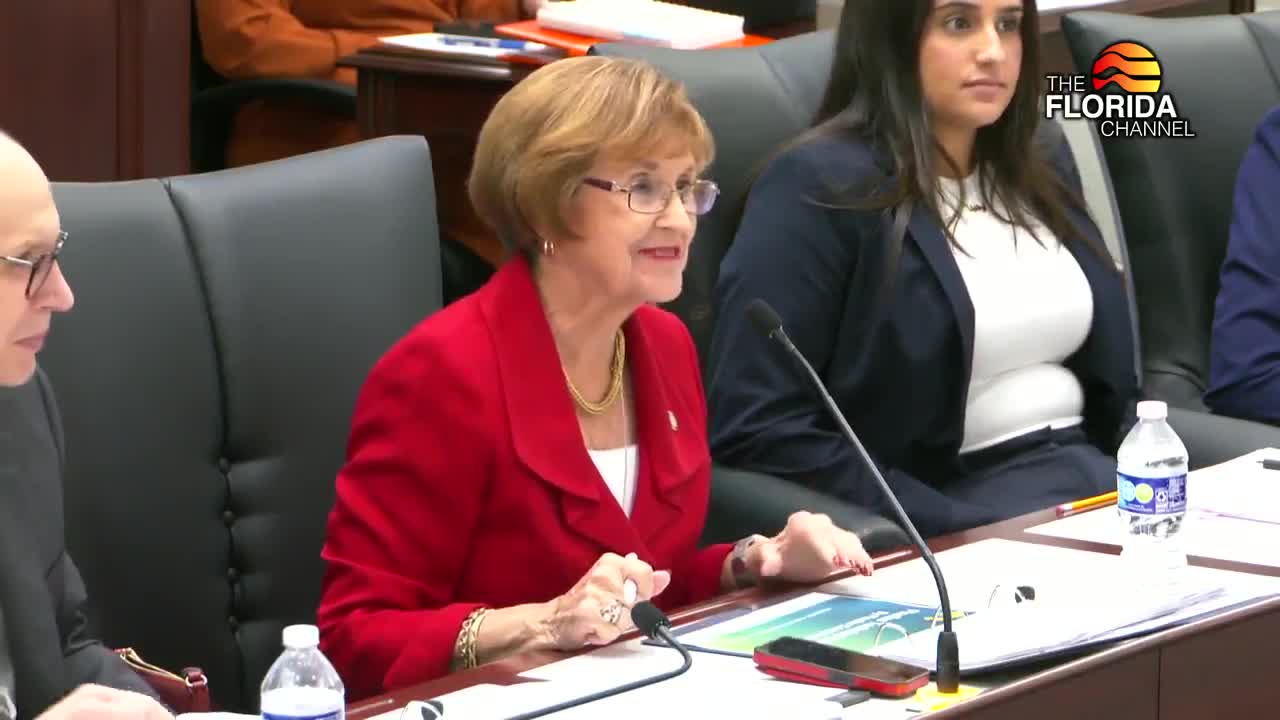Pinellas Technical College cites 90%+ placement and long waitlists to justify increased workforce funding
October 08, 2025 | 2025 Legislature FL, Florida
This article was created by AI summarizing key points discussed. AI makes mistakes, so for full details and context, please refer to the video of the full meeting. Please report any errors so we can fix them. Report an error »

A representative identified in testimony as Mr. Hunt described Pinellas Technical College's role in local workforce training and urged continued and increased operational funding for the district-operated technical-college network.
Hunt said Pinellas Technical College serves about 5,000 students annually across two campuses and that about 1,200 of those are dual-enrolled high school students. He said about 45% of Pinellas's career-dual-enrolled students complete a postsecondary program while still in high school, leaving high school with both a diploma and a credential.
"If an individual wants to work in a particular career field, they can exit Pinellas Technical College with a job in Pinellas County," Hunt told the committee, and he reported an overall job-placement rate above 90% for Pinellas Technical College graduates. Hunt said the college estimates graduates contribute about $82 million to the local economy in the first year after graduation and that the technical college's annual operating funding is about $21 million; he presented that as a roughly 400% return on investment for the state allocation.
Hunt said program capacity is constrained by operational dollars rather than physical space: he reported 35 of 53 career programs maintain waiting lists of 20 students or more and that the electrical program has 55 students on a waiting list. He said the requested increases to the workforce funding formula would be used for instructors, equipment, supplies and infrastructure maintenance so colleges can respond faster to employer needs.
On articulation and credit: Hunt described clock-hour-based technical programs and said colleges convert clock hours to credit-hour equivalents and negotiate course-level articulation with local state colleges based on course content and student mastery. He said the practice of matching course outcomes (rather than purely seat time) has been standard in multiple districts for decades.
Ending: Hunt urged investment in the district workforce formula so technical colleges can reduce waitlists and better meet employers' demand for trained workers.
Hunt said Pinellas Technical College serves about 5,000 students annually across two campuses and that about 1,200 of those are dual-enrolled high school students. He said about 45% of Pinellas's career-dual-enrolled students complete a postsecondary program while still in high school, leaving high school with both a diploma and a credential.
"If an individual wants to work in a particular career field, they can exit Pinellas Technical College with a job in Pinellas County," Hunt told the committee, and he reported an overall job-placement rate above 90% for Pinellas Technical College graduates. Hunt said the college estimates graduates contribute about $82 million to the local economy in the first year after graduation and that the technical college's annual operating funding is about $21 million; he presented that as a roughly 400% return on investment for the state allocation.
Hunt said program capacity is constrained by operational dollars rather than physical space: he reported 35 of 53 career programs maintain waiting lists of 20 students or more and that the electrical program has 55 students on a waiting list. He said the requested increases to the workforce funding formula would be used for instructors, equipment, supplies and infrastructure maintenance so colleges can respond faster to employer needs.
On articulation and credit: Hunt described clock-hour-based technical programs and said colleges convert clock hours to credit-hour equivalents and negotiate course-level articulation with local state colleges based on course content and student mastery. He said the practice of matching course outcomes (rather than purely seat time) has been standard in multiple districts for decades.
Ending: Hunt urged investment in the district workforce formula so technical colleges can reduce waitlists and better meet employers' demand for trained workers.
View full meeting
This article is based on a recent meeting—watch the full video and explore the complete transcript for deeper insights into the discussion.
View full meeting